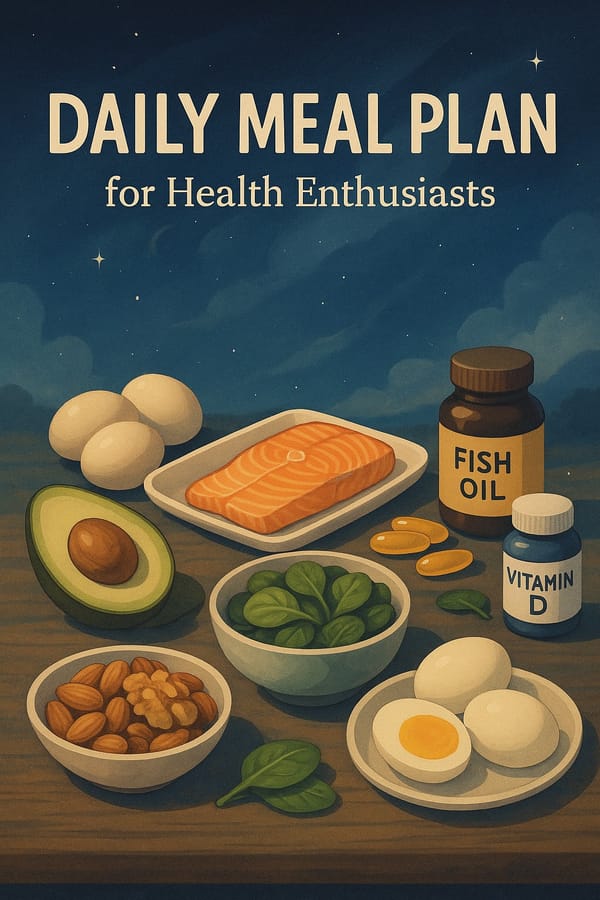Get to Know “Lactose” for a Healthy Life after 50
Learn about lactose and lactose intolerance, with guidance for those 50+ on safe dairy consumption

Introduction
When focusing on health after turning 50, many people turn to proper nutrition as the first step in maintaining their well-being. Among various dietary concerns, lactose—the sugar found in cow’s milk and other dairy products—often raises the question: “Is dairy consumption suitable or not?” With age, some may experience digestive discomforts like bloating or diarrhea when consuming lactose, leading to the doubt, “Can someone 50 years and older still enjoy milk and dairy products?”
What is Lactose?
Lactose is a type of sugar composed of glucose and galactose molecules bonded together. It is found in cow’s milk as well as products like cheese, butter, yogurt, and ice cream, generally accounting for about 2–8% of milk’s weight. Goat’s milk and sheep’s milk also contain lactose, albeit in slightly different proportions.
Upon ingesting milk, an enzyme called lactase splits lactose into glucose and galactose for absorption into the bloodstream, providing immediate energy. Children usually produce enough lactase to digest their mothers’ milk or other dairy sources. However, lactase production can decrease with age.
Nutritional Role of Lactose
- Instant Energy Source: Once split into glucose and galactose, the glucose part rapidly enters the bloodstream, fueling the brain and muscles.
- Enhanced Mineral Absorption: Some studies indicate that lactose aids in the absorption of minerals like calcium and magnesium—vital for bone and dental health, especially in the 50+ demographic.
- Supporting Gut Health: Undigested lactose in the small intestine can become food for beneficial gut bacteria in the large intestine, such as probiotic strains. On the other hand, too much undigested lactose can lead to excessive gas production.
Lactose Intolerance
Lactose intolerance is a condition where the body cannot fully break down lactose, usually due to insufficient lactase. Undigested lactose moves to the large intestine, where it is fermented by bacteria, producing gas and acids.
Common Causes and Risk Factors
- Genetics: Asian and African populations reportedly have higher rates of lactose intolerance due to genetic predispositions.
- Advancing Age: After 50, lactase production naturally tends to decline.
- Other Health Issues: Gut infections or inflammatory bowel conditions (e.g., IBD) can reduce lactase levels.
- Post-Surgery Effects: Certain gastric or intestinal surgeries may lower lactase production.
Symptoms of Lactose Intolerance
- Bloating
- Stomach aches or cramps
- Diarrhea or loose stools
- Nausea and occasional vomiting
- Excessive gas
These symptoms often occur 30 minutes to 2 hours after consuming dairy.
Impact on People Over 50
- Inadequate Calcium Intake: Milk and dairy products are major calcium sources. Fear of digestive discomfort could reduce calcium intake, heightening the risk of osteoporosis.
- Other Nutrient Deficiencies: Besides calcium, dairy provides vitamin D, protein, vitamin B12, and more. Avoiding all dairy may lead to deficiencies.
- Social and Emotional Factors: Missing out on favorite treats like ice cream or cake can affect social interactions and overall enjoyment of food.
- Health Anxiety: Chronic bloating or diarrhea might be misconstrued as more severe medical issues.
Strategies and Preventive Measures
- Lactose-Free Dairy Products: Milk that has undergone processes to reduce or eliminate lactose, as well as certain cheese varieties, can be safe options.
- Yogurt and Cultured Dairy: Probiotic-rich yogurt or fermented milk can partially digest lactose before consumption.
- Lactase Supplements: Pills or drops containing lactase help break down lactose during meals.
- Controlled Portions: Some can handle smaller quantities of dairy without triggering lactose-intolerance symptoms.
- Label Checking: Be aware of hidden lactose or milk powder in packaged foods.
Tips for Consuming Dairy
- Start Small: If unsure, try consuming small amounts of dairy and note any discomfort.
- Choose Low-Lactose Cheese: Hard cheeses like Cheddar or Parmesan typically contain less lactose than softer varieties.
- Include Probiotic Foods: Products like kimchi, sauerkraut, or probiotic-fortified yogurt can boost good gut bacteria.
- No Need to Avoid Milk Entirely: If you experience only mild reactions, small amounts of dairy can still be beneficial.
- Seek Medical Advice: Frequent, severe symptoms merit professional evaluation.
Types of Dairy and Lactose Levels
- Fresh Milk: Typically contains 4.5–5% lactose
- Skim Milk: Less fat but similar lactose content
- Yogurt & Cultured Milk: Fermentation reduces lactose content
- Hard Cheese: Aging and moisture removal minimize lactose
- Soft Cheese: Retains higher lactose content
- Butter: Mostly fat, but trace lactose remains
- Ice Cream: Contains added sugars, cream, and lactose
Alternative Calcium Sources for 50+
- Dark Leafy Greens: Kale, spinach, broccoli
- Small Fish with Bones: Sardines, anchovies
- Legumes and Seeds: Almonds, sesame seeds, flaxseeds
- Soy and Tofu Products: Calcium-fortified soy milk
- Certain Mineral Waters: Some brands offer high calcium content
Health Benefits of Moderate Lactose Consumption
- Probiotic Support: Limited lactose can nourish gut-friendly bacteria.
- Bone Density: Dairy products provide calcium and vitamin D for stronger bones.
- Heart Health: Adequate calcium and potassium intake may help regulate blood pressure.
Lactose, Liver Health, Diabetes, Insulin Resistance, and Blood Pressure
- Lactose Digestion and the Liver
Once ingested, lactose is broken down into glucose and galactose. The liver transforms galactose into glucose or glycogen for later use. Consuming moderate amounts generally poses no stress on the liver, but overconsumption of any sugar can tax this vital organ. - Effect on Diabetes and Insulin Resistance
Lactose often has a lower glycemic index (GI) than table sugar (sucrose), as galactose requires liver conversion before it becomes glucose. This slower conversion may reduce rapid spikes in blood sugar. However, individuals with diabetes or insulin resistance must still track total carbohydrate intake, not just one particular sugar type. - Influence on Blood Pressure
Dairy intake often comes with calcium and potassium, minerals beneficial for blood pressure regulation. If you avoid dairy due to lactose intolerance, consider alternative sources like leafy greens or certain fruits to maintain nutrient balance for healthy blood pressure. - Comparing Lactose with Other Sugars
- Sucrose: Higher GI, spiking blood sugar more quickly.
- Fructose: Primarily metabolized by the liver. Overconsumption can increase non-alcoholic fatty liver disease risk.
- Lactose: Lower GI and slower to raise blood sugar, yet still a source of carbs.
- Impact on Weight Gain: All sugars have similar caloric content (~4 kcal/g). Overconsumption, regardless of sugar type, can lead to weight gain.
Scientific Research and Publications
- National Institutes of Health (NIH): Highlights high lactose intolerance prevalence in certain ethnic groups (Sahi, 1994).
- Journal of the American College of Nutrition: Suggests partially hydrolyzed lactose milk or lactase-fortified milk helps reduce bloating.
- European Journal of Clinical Nutrition: Adequate calcium correlates with higher bone mineral density in older adults.
- American Journal of Clinical Nutrition: Reports probiotic yogurt alleviates lactose-intolerance symptoms.
General Health Tips for 50+
- Regular Exercise: Focus on strength and flexibility—yoga, Pilates, brisk walking.
- Adequate Sleep: Aim for 7–8 hours nightly.
- Balanced Nutrition: Combine protein, carbs, healthy fats, fresh fruits, and vegetables.
- Consult Professionals: If unsure about dietary changes or experiencing ongoing symptoms, seek medical guidance.
Conclusion
For those in their 50s and beyond, lactose need not be a health stumbling block. Understanding how your body processes it allows you to make informed food choices. Lactose-free options or lactase supplements can help, while non-dairy calcium sources ensure you don’t miss key nutrients. Always seek medical advice if you experience frequent, severe symptoms.
When writing health-related content, maintain scientific accuracy and cite credible references. We hope this article helps older adults live a comfortable and healthy life, free from digestive worries.
Disclaimer: This article is for educational purposes and not a substitute for professional medical advice.



